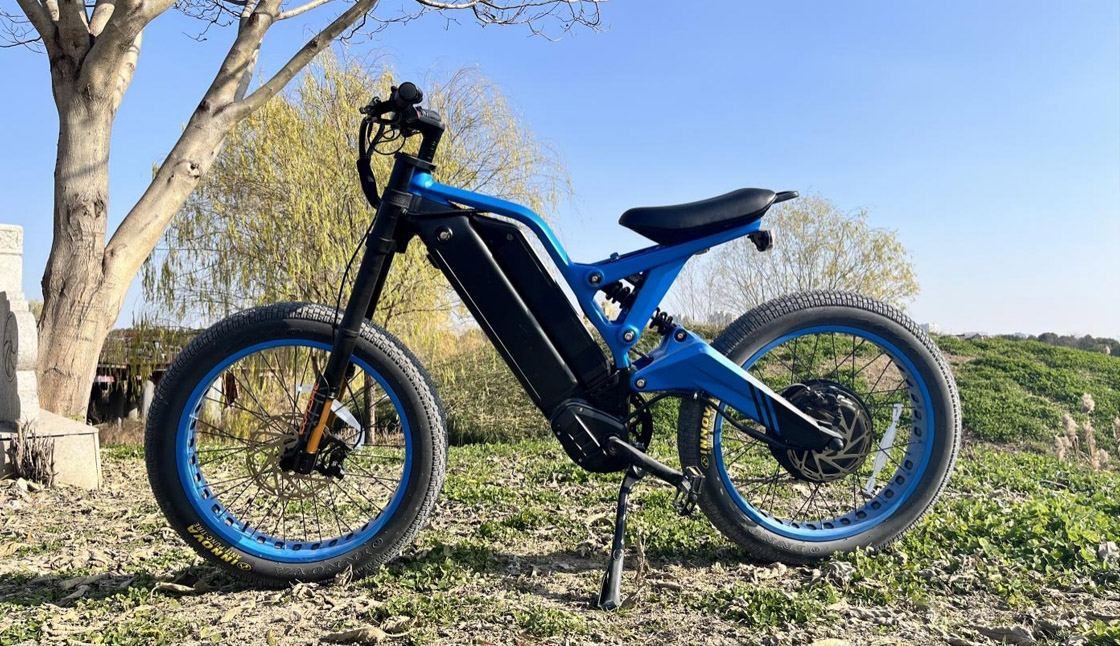Riding in the snow can be a thrilling and unique experience, but it also comes with its own set of challenges and risks. Whether you're riding a bicycle, motorcycle, or even a horse, snow creates unpredictable conditions that require careful preparation. To ensure a safe and enjoyable ride, there are several essential items you need to equip yourself with. From the right gear to the right mindset, here’s what you’ll need for riding in the snow.

For bicycles, invest in studded tires designed specifically for winter riding. These tires have metal spikes that provide extra grip on icy surfaces, helping prevent slips and falls. Wider tires also give better stability, spreading the rider’s weight over a larger area to avoid getting stuck in deep snow.
For motorcycles, snow tires or all-terrain tires with deep tread patterns are necessary. These tires provide better traction on snow-covered roads and improve handling.
For horses, proper hoof care is essential. Hoof boots or anti-slip shoes can help prevent the animal from slipping on icy surfaces. Some horses also benefit from snow pads which provide better grip when moving in the snow.
Staying warm and dry is crucial when riding in cold, snowy conditions. Layering is the key to maintaining body heat while allowing for movement.
Base Layer: Start with a moisture-wicking base layer to keep sweat off your skin. Materials like merino wool or synthetic fabrics are perfect because they dry quickly and provide warmth even when damp.
Mid Layer: A good insulating layer is essential to retain body heat. Fleece or down jackets are excellent options as they trap heat while remaining lightweight.
Outer Layer: The outer layer should be windproof and waterproof. A good quality winter jacket or snow-specific riding gear, such as snow pants, will protect you from wind, rain, and snow.
Accessories: Don’t forget warm gloves, a hat or helmet liner, and a scarf or neck gaiter to protect your face from freezing temperatures. A pair of thermal socks and waterproof boots will keep your feet warm and dry, preventing frostbite.
Safety should always be a priority, especially when navigating snowy terrain. A high-quality helmet is essential for protection in case of a fall. Make sure that your helmet is well-fitted and that it provides adequate warmth while offering ventilation to prevent your head from overheating.
In addition to a helmet, consider wearing elbow and knee pads, especially if you're riding a bicycle or e motorcycle for sale. These pads can reduce the impact in case of a fall on icy surfaces.
Snowy weather often comes with reduced visibility. Riding in these conditions can be dangerous if other people or vehicles can't see you.
Reflective Gear: Wear reflective clothing or vests, and use lights on your bike or motorcycle to ensure visibility. Reflective tape can be applied to your equipment as an added precaution.
Helmet Visor or Goggles: In addition to visibility, you’ll need to protect your eyes from the glare of snow and wind. Consider a helmet visor or snow goggles with anti-fog lenses to ensure clear vision during your ride.
Snow and cold weather can be tough on equipment. Carry a small maintenance kit to deal with any issues that may arise. For custom electric bicycles, this kit should include tools to fix flats, adjust brakes, and tighten loose parts. For motorcycles, you’ll want to carry basic tools for minor repairs and a tire pump. Be sure to check tire pressure before heading out, as cold temperatures can cause air to contract.
Snow can turn a pleasant ride into an unexpected challenge. Always carry emergency supplies, especially if you are heading into remote areas. Some essential items to bring include:
A phone or GPS device: To help you navigate and call for help if needed.
First Aid Kit: Basic medical supplies such as band-aids, antiseptic, pain relievers, and a thermal blanket can make a huge difference in an emergency.
Energy Snacks and Water: Riding in the cold can deplete your energy reserves quickly. Carry energy bars, nuts, or other high-calorie snacks to keep you fueled. Hydration is equally important, even in cold weather.
A multi-tool or survival tool: A tool with various functions such as a knife, pliers, or screwdriver can be invaluable in emergencies.
Finally, to truly enjoy a ride in the snow, you need to adjust your riding technique and mindset. Snow can be unpredictable, and riding on it requires extra caution and skill.
Ride Slow and Steady: Don’t rush. Snow can be slippery, so maintaining a steady speed and avoiding sudden movements will help you maintain control.
Look Ahead: Always be aware of your surroundings, including the condition of the snow and ice. Avoid icy patches, and try to ride in areas that are packed down or groomed.
Keep Calm: Snowy conditions can be nerve-wracking at first, but staying calm and focused will help you navigate safely. In difficult terrain, stop and assess the situation before proceeding.